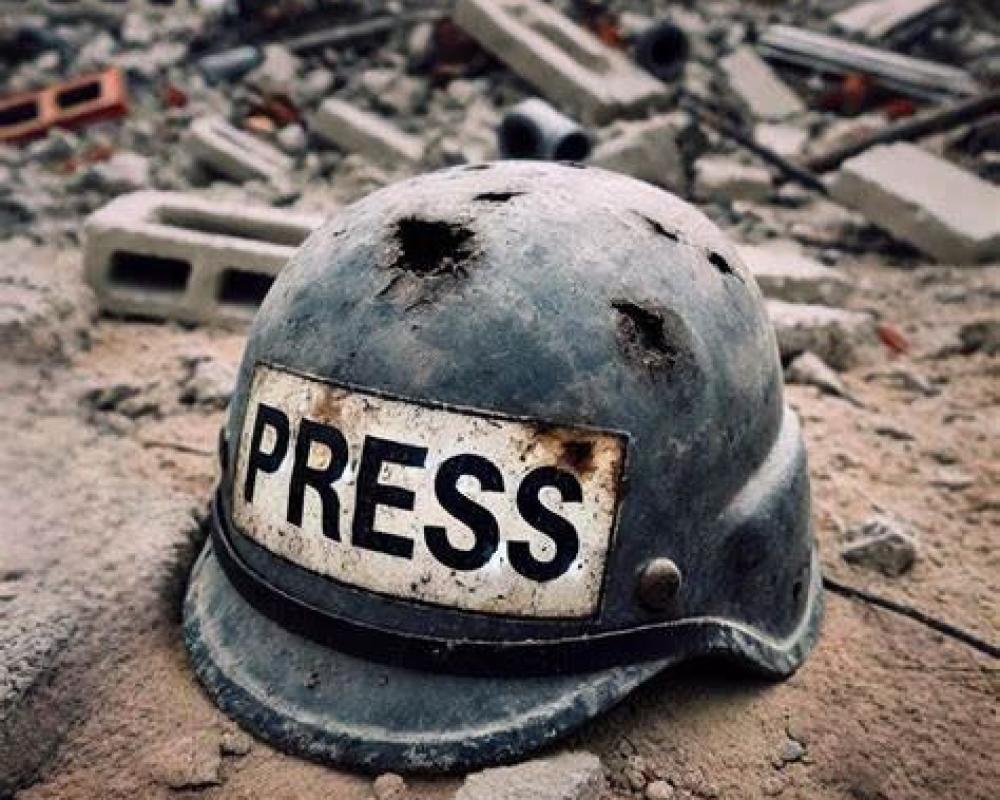
Ramallah /PNN /
On World Press Freedom Day, the Palestinian Journalists’ Syndicate (PJS) released a harrowing report detailing what it described as “deliberate and systematic” targeting of Palestinian journalists, revealing that 210 media workers have been killed since the onset of Israel’s military campaign in Gaza on 7 October 2023. An additional 664 of their family members have also lost their lives, many in strikes on journalists’ homes and displacement shelters.
The report, compiled by Mohammad Abdel Nabi Al-Lahham, head of the syndicate’s Committee for Media Freedoms, documented 178 serious injuries and 226 journalists who survived live fire. It presents what Al-Lahham calls “damning evidence” of crimes against journalists, collected from verified field data.
“This is not collateral damage; journalists are being directly targeted — in their workplaces, their homes, and even in tents near hospitals,” Al-Lahham said.
Journalists Killed with “Every Means of Force”
The report accuses Israeli forces of intentionally targeting journalists with missiles, artillery shells, drones, live bullets, toxic gas, and stun grenades. Between 7 October 2023 and early May 2025, 210 journalists were reportedly killed.
According to the PJS, Israeli authorities—including the military, political leaders, settlers, courts, and state-aligned media—are all implicated in what the syndicate described as a “coordinated assault” on press freedom in the occupied Palestinian territories.
90 Killed in Their Homes, 29 in Displacement Tents
The syndicate states that after media offices were bombed early in the war, journalists resorted to working from home. Some 90 were killed in strikes on their residences, including journalist Hiba Al-Abadleh, who was killed along with her child and mother in Khan Younis on 9 December 2023.
As bombing continued, displaced journalists erected tents near hospitals, assuming these areas would be spared. However, the report says 29 journalists were killed in targeted strikes on these makeshift shelters, including a missile attack on a journalist tent near Nasser Hospital on 7 April 2025 that killed reporter Helmi Al-Faqaawi.
Families of Journalists Also Targeted
The PJS documented the destruction of 152 homes belonging to journalists, killing 664 of their relatives. The family of journalist Motaz Azaiza lost 26 members in a single strike. “Being a journalist has become a death sentence not only for the reporters themselves, but for their families,” the report stated.
Live Ammunition Over Tear Gas
The report highlights a shift in the nature of repression, noting that journalists are now more likely to be injured by shrapnel or live bullets than by crowd-control measures like tear gas or stun grenades. Photographer Sami Shahadeh lost his leg in an explosion while covering events in Nuseirat camp in April 2024. BBC Arabic journalist Ahmad Al-Agha and photographer Ehab Al-Radaini also suffered serious injuries in recent months.
Around 226 journalists were reportedly shot at directly while reporting in Gaza and the West Bank.
Arbitrary Arrests, Torture, and Forced Disappearances
The syndicate recorded 139 arrests and detentions, many without trial or access to lawyers or family. Some, including journalists Nidal Al-Wahidi and Haitham Abdul Wahid, remain forcibly disappeared. Others were subjected to harsh interrogation, torture, and denial of medical care.
110 Media Institutions Destroyed or Shut Down
The report accuses Israeli forces of systematically targeting media offices to disrupt reporting. More than 110 media outlets were destroyed or closed, including offices of Al Mayadeen, Al Jazeera, and Palestine TV in Jerusalem. Equipment was confiscated, and staff intimidated or assaulted.
825 Cases of Obstruction and Assault
The PJS documented 825 incidents in which media teams were obstructed, detained, or attacked while reporting. Journalists have been beaten, insulted, and had their equipment destroyed by Israeli security forces.
Settler Attacks and Intentional Vehicular Assaults
Settler violence against journalists has escalated, including shooting, beatings, and social media incitement. The report also cites multiple incidents in which military vehicles deliberately attempted to run over journalists on camera.
Systematic Pattern of Abuse
The report concludes that Israeli authorities have developed a “systematic methodology” of repressing Palestinian journalists. Tactics include launching gas canisters directly at reporters, levying arbitrary fines, blocking coverage in Jerusalem, issuing travel bans, and military prosecution on fabricated charges.
The Committee for Media Freedoms called for the establishment of an independent international investigation into these violations and urged immediate international pressure to secure the release of detained journalists and ensure access to medical care for the wounded.
The syndicate also urged legal action against Israeli officials before international courts and called for international protection for journalists and media organisations operating in the occupied Palestinian territories.